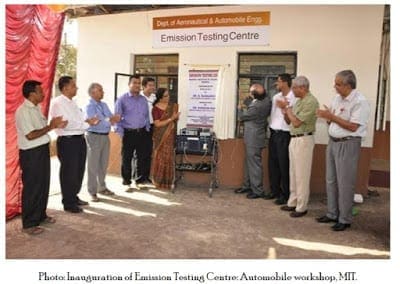
Hundreds of satellites are in geostationary orbit just under 36,000 km above the Earth’s surface on the equatorial plane. The majority are communications and meteorological satellites that share their orbit with other spacecraft that have passed away. The amount of junk in geostationary orbit is insignificant compared to the satellites and garbage in low-Earth orbit, stretching from just above Earth’s atmosphere to 2,000 kilometers above the surface. Spacecraft must travel through low-Earth orbit to reach higher orbits, the Moon, or other planets, where debris is most thick and orbital velocities are highest. As a result, space pollution endangers spacecraft and all forms of space travel.

Statistics of Collisions
Both crewed, and uncrewed space flight is threatened by the amount of junk in space. The chances of a space shuttle colliding with a piece of space junk are 1 in 300. (The danger was 1 in 185 for the Hubble Space Telescope missions because of its higher and more debris-filled orbit.) When a known piece of debris has a larger than 1-in-100,000 chance of colliding with the International Space Station (ISS), the astronauts undertake a debris avoidance maneuver, which raises the ISS’s orbit to avoid a collision. When the ISS passes through a debris cloud from a Russian anti-satellite test, as it did in November 2021, astronauts close the station’s hatches and take refuge in their ship.

Space Accidents
Two satellites crashed at 22,300 mph over 500 miles above Siberia in 2009, resulting in thousands of debris fragments in a cloud. The inactive Russian spacecraft Cosmos 2251 and the active U.S.-based communication satellite Iridium 33 were the cause of this high-speed collision. It was the first time two spacecraft collided in space, and it served as a stark warning of the rising problem of space debris. This material can be as small as a chip of paint or as large as a leftover rocket stage.

There are currently over 2,200 active satellites circling the Earth. However, the inoperative satellites, expended rockets, and debris that litter the region — collectively known as space debris or space junk – are becoming increasingly concerning.
Orbital debris began to accumulate after the launch of Sputnik I in 1957 when humans first entered space. By 2020, about 34,000 pieces of garbage with a diameter of 10 cm or larger, 900,000 objects with a diameter of 1 cm to 10 cm, and over 128,000,000 fragments with less than 1 cm would have joined the 2,200 operational satellites. The junk in Earth’s orbit is estimated to weigh more than 7 million pounds. Although orbits deteriorate over time and debris can re-enter and burn up in Earth’s atmosphere, the process can take years.
Precautionary Measures
International space authorities are developing standards to reduce space trash, while aerospace companies construct spacecraft to proactively avoid and even gather up garbage. To eradicate existing debris and prevent future generations, concerted, joint actions on numerous fronts are required.
According to the United Nations, all corporations must remove their satellites from orbit within 25 years of their mission’s completion. However, because satellites can (and frequently do) fail, this is difficult to enforce. Several companies throughout the world have devised unique strategies to address this issue.

Satellites no longer in orbit are drawn back into the atmosphere and burned up. Capturing a satellite with a harpoon, trapping it in a large net, grabbing it with magnets, or even heating the satellite and increasing its air drag, forcing it to fall out of orbit are all options.
Space pollution puts the satellites as well as crewed spacecraft at additional risk. In a situation of zero gravity and endless darkness, the chance of collision with random debris is an unnecessary point of concern. With growing technology and ways in which the world gets connected, the number of satellites orbiting Earth is also increasing, increasing the dependence on said satellites. When a satellite collides with debris, society could lose connectivity which would only cause mass hysteria. The countries should manufacture and plan space missions with a strategy to bring the spacecraft parts back to Earth after the expiry date; this would ensure that space is kept clean and automatically reduce the dangers caused by space debris.




Be the first to comment